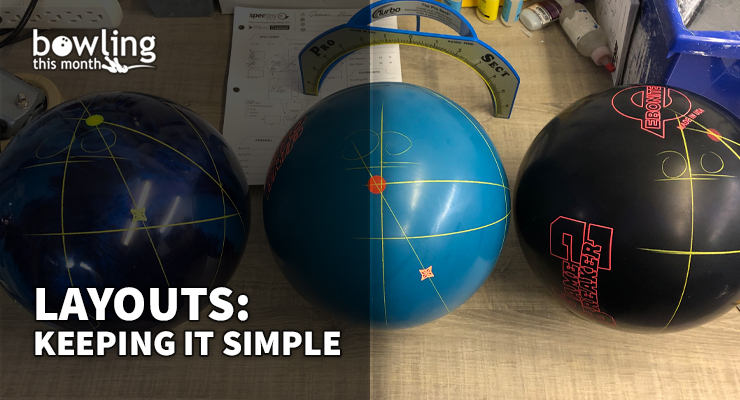Article Contents
- 1. Occam’s razor
- 2. What’s my bowling DNA?
- 3. Finding what works
- 4. KISS in action
- 5. Wrapping it up
Note: This article is only available to Bowling This Month subscribers.
A lot of the questions bowlers have about equipment relate to layouts:
- “What kinds of layouts are best for sport patterns?”
- “What’s the difference between Dual Angle and the Pin Buffer methods?”
- “What’s most important in a layout?”
My goal over the next few articles is to address the key areas of concern that bowlers have regarding laying out and drilling bowling balls. Before we get started, it’s important to understand that there is no “one size fits all” when it comes to layouts. No two people are alike, so it is impossible for something to work exactly the same for two different people. You can stop worrying about what others are using and start paying attention to what is working (and not working), for you! This is what we will be addressing in this article. We’ll dive into more specific examples and details in future articles.
Occam’s razor
Occam’s razor is a problem-solving principle that essentially states, “the simplest answer is usually the right answer.” This is how I want you to start looking at layouts, surface, ball selection, etc. We will dive into each of these things individually in the future, but for now we are going to apply Occam’s razor and the KISS acronym to layouts.
Most of us are competing in the same leagues, in the same centers, and in the same tournaments, year after year. Inevitably, the environment is always changing, but often what works well once will work well most of the time. Taking copious notes every time you bowl will aid in everything we are about to discuss. It is very difficult to remember what happened every game of every league night, or at state and national tournaments, year after year. Written records will help get you more pins every year!
What’s my bowling DNA?
Before you take anything away from this article, you must know that you have an (almost) invisible bowling DNA. In this instance, your DNA is your positive axis point (PAP). This is the axis your ball rotates around based on your release. Put simply, your ...
Already a premium member? Click here to log in.


 (Only
(Only 